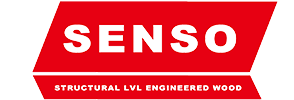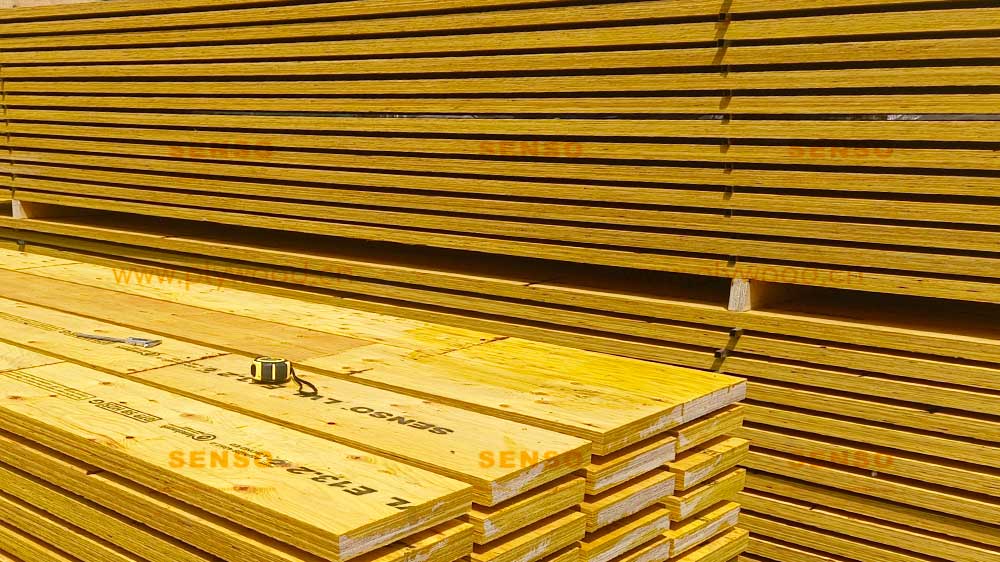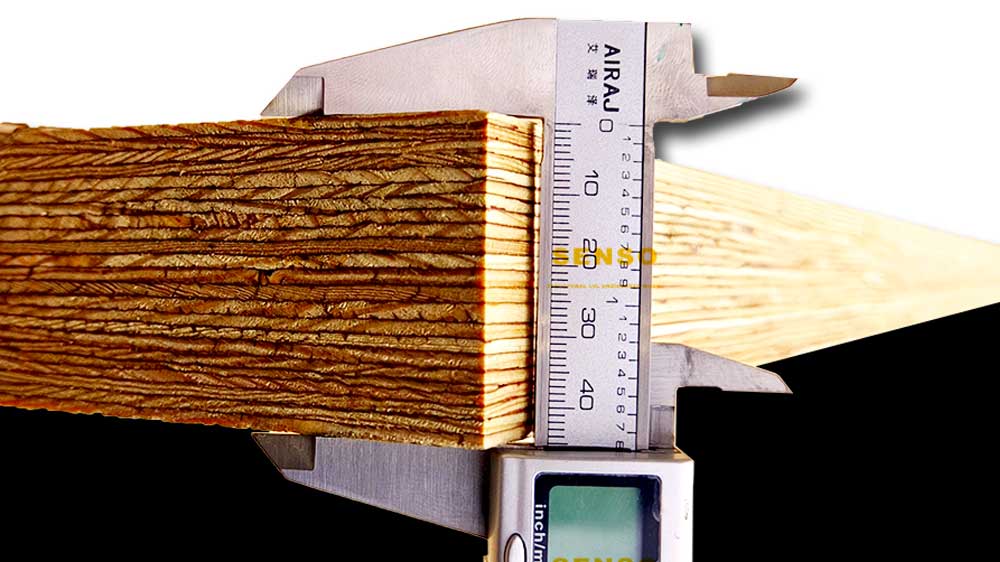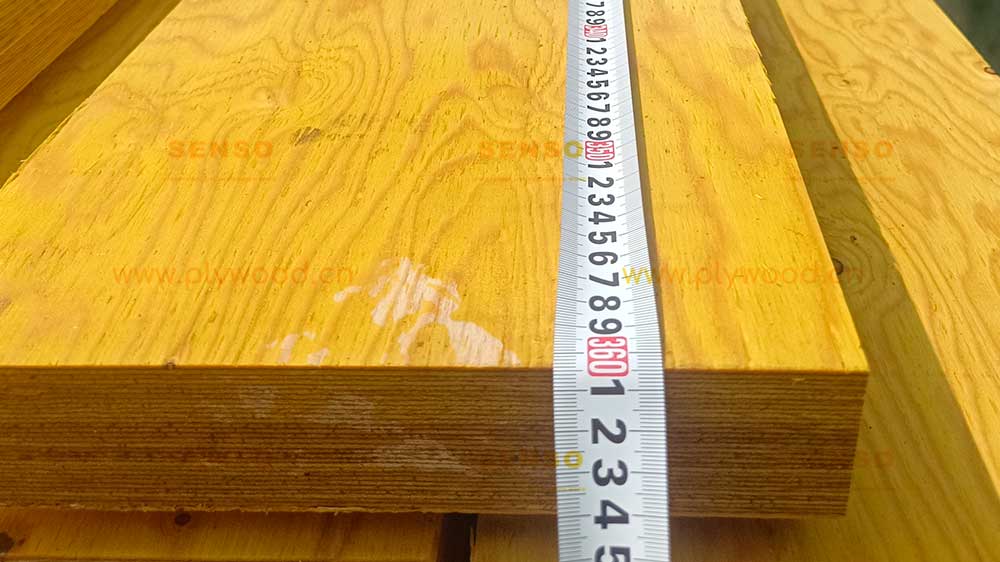Timber beams, an integral part of construction, are widely used for their strength, versatility, and sustainability. These beams are manufactured from various types of wood, including softwoods and hardwoods, and are often engineered to meet specific structural requirements. Timber beams are used in numerous applications, from residential homes to large commercial buildings. They provide excellent load-bearing capabilities and contribute to the aesthetic appeal of a structure, making them a popular choice among architects and builders.
Understanding Timber Beams
Timber beams are essential components in construction. They are used for structural support and are designed to bear loads. The versatility of timber beam makes them suitable for a variety of construction projects, including residential, commercial, and industrial buildings. Timber beam come in different sizes and types, including solid wood beam and engineered timber beam, which are manufactured by bonding layers of wood together. This process enhances their strength and stability, making them ideal for heavy-duty applications. Timber beam are also favored for their sustainability, as they are a renewable resource and have a lower carbon footprint compared to steel and concrete.
The Advantages of Timber Beams
Timber beams offer numerous advantages in construction. They are known for their strength and durability, which allow them to support heavy loads. Additionally, timber beam are lightweight compared to steel and concrete, making them easier to handle and install. This can lead to faster construction times and reduced labor costs. Timber beam also have excellent thermal insulation properties, which can help improve the energy efficiency of a building. Furthermore, timber beam add a natural and aesthetic appeal to a structure, creating a warm and inviting atmosphere.
Types of Timber Beams
There are several types of timber beams used in construction, each with its unique properties and applications. Solid wood beam, made from a single piece of timber, are commonly used for their natural strength and beauty. Engineered timber beam, such as laminated veneer lumber (LVL) and glued laminated timber (glulam), are manufactured by bonding multiple layers of wood together. These engineered beams offer enhanced strength and stability, making them suitable for large spans and heavy loads. Other types of timber beam include cross-laminated timber (CLT) and parallel strand lumber (PSL), which are used in specialized applications.
Applications of Timber Beams
Timber beams are used in a wide range of construction projects. In residential construction, timber beam are often used for framing walls, floors, and roofs. They provide structural support and contribute to the overall strength of the building. In commercial construction, timber beam are used in larger spans and heavy load-bearing applications, such as in office buildings and shopping centers. Timber beam are also used in industrial construction, including warehouses and factories, where their strength and durability are essential. Additionally, timber beam are used in bridges and other infrastructure projects for their load-bearing capabilities and environmental benefits.
Sustainability of Timber Beams
Timber beams are a sustainable choice for construction. They are made from a renewable resource and have a lower carbon footprint compared to steel and concrete. The production of timber beam requires less energy and produces fewer greenhouse gas emissions. Additionally, timber beam can be sourced from sustainably managed forests, ensuring that the environmental impact is minimized. Using timber beam in construction can also contribute to green building certifications, such as LEED, by improving the overall sustainability of a project.
Timber Beams in Modern Architecture
Timber beams are increasingly being used in modern architecture for their aesthetic appeal and versatility. They can be used to create stunning architectural features, such as exposed beams and vaulted ceilings. Timber beam add a natural warmth and beauty to a space, making them a popular choice for interior design. In addition to their aesthetic qualities, timber beam also provide structural support and contribute to the overall strength of a building. The use of timber beam in modern architecture reflects a growing trend towards sustainable and eco-friendly building practices.
Timber Beam: A Cost-Effective Solution
Timber beam are a cost-effective solution for construction. They are generally less expensive than steel and concrete, making them an affordable option for builders and developers. The lightweight nature of timber beam also reduces transportation and handling costs. Additionally, timber beam are easy to work with, which can lead to faster construction times and reduced labor costs. The long-term benefits of timber beam, such as their durability and energy efficiency, also contribute to cost savings over the life of a building.
The Future of Timber Beams
The future of timber beams in construction looks promising. With advancements in technology and manufacturing processes, timber beam are becoming stronger and more versatile. Engineered timber beam, such as cross-laminated timber (CLT), are opening up new possibilities for timber construction, allowing for taller and more complex structures. The growing emphasis on sustainability and green building practices is also driving the demand for timber beam. As more architects and builders recognize the benefits of using timber beam, their popularity is expected to continue to rise.
Timber Beams and Building Codes
Building codes and regulations play a crucial role in the use of timber beams in construction. These codes ensure that timber beam meet specific safety and performance standards. In recent years, building codes have evolved to accommodate the increasing use of timber beam, particularly in mid-rise and high-rise buildings. The development of performance-based codes, which focus on the overall performance of a building rather than prescriptive requirements, has also facilitated the use of timber beam in innovative and sustainable construction projects.
Timber Beams and Fire Safety
Fire safety is a critical consideration in the use of timber beam in construction. Timber beams are treated with fire-retardant chemicals to enhance their fire resistance. Additionally, engineered timber beam, such as glulam and CLT, are designed to char on the outside when exposed to fire, which helps to protect the inner core and maintain the structural integrity of the beam. Building codes and regulations also require the use of fire-resistant materials and construction techniques to ensure the safety of timber structures.
Timber Beams in Historical and Cultural Buildings
Timber beams have been used in construction for centuries and are a prominent feature in many historical and cultural buildings. These beams provide a unique connection to the past, showcasing the craftsmanship and architectural styles of different eras. The restoration and preservation of historical buildings often involve the careful repair or replacement of timber beam to maintain the integrity and authenticity of the structure. Timber beam continue to be valued for their historical significance and their contribution to the cultural heritage of communities.
Timber Beams and Acoustic Performance
Timber beams also offer excellent acoustic performance, making them a preferred choice for buildings where sound control is important. The natural properties of wood help to absorb and dampen sound, reducing noise levels and creating a more comfortable environment. This is particularly beneficial in residential buildings, schools, and office spaces where acoustics play a crucial role in the overall functionality and comfort of the space. The use of timber beam in construction can contribute to better acoustic performance and enhance the quality of life for occupants.
Timber Beams and Environmental Impact
The environmental impact of timber beams is significantly lower compared to other construction materials like steel and concrete. The production of timber beam involves less energy consumption and generates fewer greenhouse gas emissions. Additionally, timber beam store carbon dioxide, which helps to mitigate climate change. The use of sustainably sourced timber further reduces the environmental impact, as it ensures that forests are managed responsibly and regenerated for future use. The environmental benefits of timber beam make them an attractive option for eco-conscious builders and developers.
Timber Beams in Prefabricated Construction
Prefabricated construction, where building components are manufactured off-site and assembled on-site, is becoming increasingly popular. Timber beams are well-suited for prefabricated construction due to their lightweight nature and ease of handling. Prefabricated timber beam can be precisely manufactured to meet specific design requirements, ensuring a high level of accuracy and quality. The use of timber beam in prefabricated construction can lead to faster construction times, reduced waste, and lower overall costs. This method of construction is gaining traction as a sustainable and efficient way to build.
Timber Beams and Innovative Construction Techniques
Innovative construction techniques are expanding the possibilities for using timber beams in new and exciting ways. Techniques such as hybrid construction, which combines timber beam with other materials like steel and concrete, are being used to create unique and efficient structures. Digital fabrication and advanced manufacturing technologies are also enabling the creation of complex and customized timber beam components. These innovations are pushing the boundaries of what is possible with timber beam and are leading to more creative and sustainable building solutions.
Timber Beam in Green Building Certifications
Green building certifications, such as LEED (Leadership in Energy and Environmental Design), recognize and promote sustainable building practices. Timber beam can contribute to achieving these certifications by providing a renewable and low-carbon building material. The use of timber beam can earn points for resource efficiency, indoor environmental quality, and innovation in design. As the demand for green buildings continues to grow, the role of timber beam in achieving sustainability goals will become increasingly important.
Timber Beams and Structural Health Monitoring
Structural health monitoring (SHM) involves the use of sensors and technology to monitor the condition and performance of a building’s structure. Timber beam can be equipped with SHM systems to detect changes in load, temperature, moisture, and other factors that may affect their integrity. This proactive approach allows for early detection of potential issues and ensures the long-term safety and durability of the structure. SHM systems are becoming more advanced and accessible, making them a valuable tool for maintaining the performance of timber beam structures.
Timber Beams and Community Impact
The use of timber beams in construction has a positive impact on communities. Timber beam projects create jobs and support local economies, particularly in rural areas where timber is harvested and processed. The construction of timber beam buildings also contributes to the development of sustainable and resilient communities. Timber beam provide safe, comfortable, and aesthetically pleasing spaces for people to live, work, and gather. The social and economic benefits of timber beams extend beyond the construction site, making them a valuable asset for community development.
Timber Beams and Future Trends
The future of timber beams in construction is bright, with several emerging trends shaping their use. One trend is the increasing adoption of mass timber construction, where large timber panels and beam are used to create entire building structures. This approach offers significant environmental and economic benefits and is gaining popularity in both residential and commercial projects. Another trend is the integration of smart technology into timber beam construction, enabling buildings to be more responsive and adaptive to their environments. As these trends continue to evolve, timber beam will play a key role in the future of sustainable and innovative construction.
Timber Beams in Retrofitting and Renovation
Retrofitting and renovation projects often involve the use of timber beams to enhance the structural integrity and aesthetic appeal of existing buildings. Timber beam can be used to reinforce old structures, add new architectural features, or replace damaged components. The flexibility and versatility of timber beam make them ideal for a wide range of renovation applications. Additionally, using timber beam in retrofitting projects can improve the energy efficiency and sustainability of older buildings, bringing them up to modern standards while preserving their character.
Timber Beams and Cultural Significance
Timber beams have a rich cultural significance and are often associated with traditional craftsmanship and architectural heritage. In many cultures, timber beam construction techniques have been passed down through generations, contributing to the unique identity of communities. The use of timber beam in modern construction continues to honor these traditions while incorporating new technologies and practices. This blend of old and new creates buildings that are not only functional and sustainable but also culturally meaningful and aesthetically pleasing.
Timber Beams in International Markets
The demand for timber beams is growing in international markets, driven by the global emphasis on sustainability and green building practices. Countries around the world are recognizing the benefits of timber beam and are incorporating them into their construction projects. The international market for timber beam presents opportunities for exporters and manufacturers to expand their reach and meet the needs of diverse regions. As awareness of the environmental and economic advantages of timber beam increases, their use in construction is expected to become more widespread globally.
Timber Beams and Collaborative Design
Collaborative design, where architects, engineers, and builders work together from the early stages of a project, is becoming more common in timber beam construction. This approach ensures that all aspects of the design, from structural integrity to aesthetic appeal, are considered and optimized. Collaborative design also promotes innovation and efficiency, leading to better outcomes for the project. The use of timber beams in collaborative design projects highlights the importance of teamwork and interdisciplinary collaboration in creating successful and sustainable buildings.
Timber Beam in Education and Research
Education and research play a crucial role in advancing the use of timber beams in construction. Universities and research institutions are conducting studies on the properties and performance of timber beam, exploring new applications and improving existing practices. Educational programs are also training the next generation of architects, engineers, and builders in timber beam construction techniques. This investment in education and research is essential for the continued growth and development of the timber beam industry.
Timber Beams and Customization
Customization is a key advantage of timber beams, allowing them to be tailored to the specific needs of a project. Timber beam can be cut, shaped, and finished in various ways to achieve the desired look and performance. This level of customization makes timber beam suitable for a wide range of architectural styles and structural requirements. The ability to customize timber beam also supports creativity and innovation in design, enabling architects and builders to create unique and personalized spaces.
Timber Beams and Community Involvement
Community involvement is an important aspect of timber beam construction projects. Engaging with local communities during the planning and construction phases can lead to better outcomes and greater acceptance of the project. Community involvement can include consultations, workshops, and partnerships with local organizations. The use of timber beams in community-oriented projects can also promote sustainability and environmental awareness, inspiring residents to support and participate in green building initiatives.
Timber Beams and Resilience
Resilience is a key consideration in modern construction, and timber beams offer several benefits in this regard. Timber beam are flexible and can absorb energy during events such as earthquakes, reducing the risk of structural damage. Their natural properties also make them resistant to certain environmental factors, such as temperature fluctuations and humidity. The use of timber beam in resilient construction projects helps to create buildings that can withstand and recover from adverse conditions, ensuring the safety and well-being of occupants.
Timber Beams and Wellness
The use of timber beams in construction can contribute to the wellness of building occupants. The natural appearance and feel of timber beam create a calming and inviting environment, which can have positive effects on mental and physical health. Timber beam also contribute to better indoor air quality by regulating humidity levels and reducing the presence of harmful chemicals. Incorporating timber beam into building design supports the well-being of occupants and enhances their overall quality of life.
Timber Beam and Smart Building Technology
Smart building technology is transforming the way buildings are designed, constructed, and operated. Timber beams can be integrated with smart sensors and systems to monitor their condition and performance in real-time. This technology allows for proactive maintenance and management of timber beam structures, ensuring their longevity and safety. The integration of smart technology with timber beam represents a significant advancement in the construction industry, enabling more efficient and sustainable building practices.
Timber Beams and Environmental Certifications
Environmental certifications, such as FSC (Forest Stewardship Council) and PEFC (Programme for the Endorsement of Forest Certification), ensure that timber beams are sourced from responsibly managed forests. These certifications provide assurance that the timber used in construction meets high environmental and social standards. Choosing certified timber beam supports sustainable forestry practices and contributes to the preservation of ecosystems and biodiversity. The use of certified timber beam is an important consideration for environmentally conscious builders and developers.
Timber Beams and Aesthetic Flexibility
Aesthetic flexibility is one of the key advantages of using timber beams in construction. Timber beam can be finished in various ways to achieve different looks, from rustic and traditional to modern and sleek. They can be stained, painted, or left in their natural state, depending on the desired aesthetic. The versatility of timber beam allows architects and designers to create visually stunning and unique spaces that reflect the character and style of the project.
Timber Beam in Mixed-Use Developments
Mixed-use developments, which combine residential, commercial, and recreational spaces, are increasingly incorporating timber beam into their designs. Timber beam provide the structural support needed for these multi-purpose buildings while adding a natural and cohesive aesthetic. The use of timber beam in mixed-use developments supports sustainability goals and creates vibrant, livable communities. The flexibility and strength of timber beam make them an ideal choice for these complex and dynamic projects.
Timber Beams and Building Longevity
Building longevity is a crucial consideration in construction, and timber beams contribute significantly to the durability of a structure. Properly treated and maintained timber beam can last for decades, providing reliable support and performance over the long term. The natural resilience of timber beam helps them withstand various environmental conditions, from humidity to temperature changes. Investing in high-quality timber beam ensures that buildings remain safe, functional, and aesthetically pleasing for years to come.
Timber Beams and Biophilic Design
Biophilic design, which seeks to connect building occupants with nature, is gaining popularity in architecture. Timber beams play a vital role in biophilic design by bringing natural elements into indoor spaces. The use of timber beam creates a warm and inviting environment that promotes well-being and productivity. Incorporating timber beam into biophilic design projects supports the overall health and happiness of occupants, making it a valuable approach in modern construction.
Timber Beam and Climate Adaptation
Climate adaptation is an important aspect of sustainable construction, and timber beam offer several benefits in this regard. Timber beam are adaptable to various climates and can be used in a wide range of environmental conditions. Their natural properties help regulate indoor temperature and humidity, contributing to the comfort and well-being of occupants. The use of timber beam in climate-adaptive buildings supports resilience and sustainability, ensuring that structures can withstand and thrive in changing environmental conditions.
Timber Beams and Heritage Conservation
Heritage conservation involves preserving and maintaining historical buildings, and timber beams play a crucial role in this process. Timber beam are often used to restore and reinforce old structures, ensuring their stability and authenticity. The use of traditional craftsmanship and materials in heritage conservation projects honors the historical significance of the building while incorporating modern techniques to enhance its longevity. Timber beam continue to be valued for their role in preserving cultural heritage and architectural history.
Timber Beam and Urban Development
Urban development projects are increasingly incorporating timber beam as a sustainable and aesthetically pleasing building material. Timber beam are used in various applications, from residential buildings to commercial complexes and public spaces. Their versatility and strength make them suitable for the demands of urban construction, while their natural appearance enhances the visual appeal of the built environment. The use of timber beam in urban development supports the creation of livable, sustainable, and attractive cities.
Timber Beams and Technological Advancements
Technological advancements are driving the evolution of timber beam construction. Innovations in materials science, manufacturing processes, and construction techniques are enhancing the performance and capabilities of timber beams. New technologies, such as digital fabrication and prefabrication, are making timber beam construction more efficient and precise. These advancements are opening up new possibilities for the use of timber beam in complex and large-scale projects, pushing the boundaries of what can be achieved with this versatile material.
Timber Beams and Energy Efficiency
Energy efficiency is a key consideration in modern construction, and timber beams contribute to achieving this goal. Timber beam have excellent thermal insulation properties, which help regulate indoor temperatures and reduce the need for heating and cooling. This can lead to significant energy savings and lower utility costs for building occupants. The use of timber beam in energy-efficient buildings supports sustainability goals and enhances the overall performance and comfort of the structure.
Timber Beams and Regulatory Compliance
Regulatory compliance is essential in construction, and timber beams must meet specific standards and codes. Building codes ensure that timber beam are designed, manufactured, and installed safely and effectively. Compliance with these regulations ensures the structural integrity and performance of timber beam buildings. The use of certified and tested timber beam provides assurance that they meet the required standards, supporting the safety and reliability of construction projects.
Timber Beam and Community Benefits
The use of timber beam in construction projects can bring numerous benefits to communities. Timber beam projects create jobs and support local economies, particularly in regions where timber is harvested and processed. The construction of timber beam buildings also contributes to the development of sustainable and resilient communities, providing safe and comfortable spaces for people to live, work, and gather. The social and economic benefits of timber beam extend beyond the construction site, making them a valuable asset for community development.
Timber Beams and Future Innovations
The future of timber beams in construction is bright, with ongoing research and innovation driving new developments. Emerging technologies, such as 3D printing and robotics, are being explored for their potential to revolutionize timber beam construction. These innovations have the potential to make timber beam construction more efficient, precise, and cost-effective. As research and development continue, new applications and possibilities for timber beam will emerge, ensuring their continued relevance and importance in the construction industry.
Frequently Asked Questions
Q: What are timber beams?
A: Timber beams are structural components made from wood, used for supporting loads in construction.
Q: What are the advantages of using timber beams?
A: Timber beam are strong, durable, lightweight, and offer excellent thermal insulation. They are also sustainable and add aesthetic appeal to buildings.
Q: What types of timber beams are available?
A: There are several types, including solid wood beams, engineered timber beam like LVL and glulam, and other types like CLT and PSL.
Q: How are timber beams used in construction?
A: Timber beams are used for framing walls, floors, and roofs in residential construction, and for larger spans and heavy loads in commercial and industrial construction.
Q: Are timber beams sustainable?
A: Yes, timber beam are a sustainable choice as they are made from renewable resources and have a lower carbon footprint compared to steel and concrete.
Q: What are the cost benefits of timber beams?
A: Timber beams are generally less expensive than steel and concrete, are easy to work with, and offer long-term cost savings through durability and energy efficiency.
Post time: Aug-04-2024




